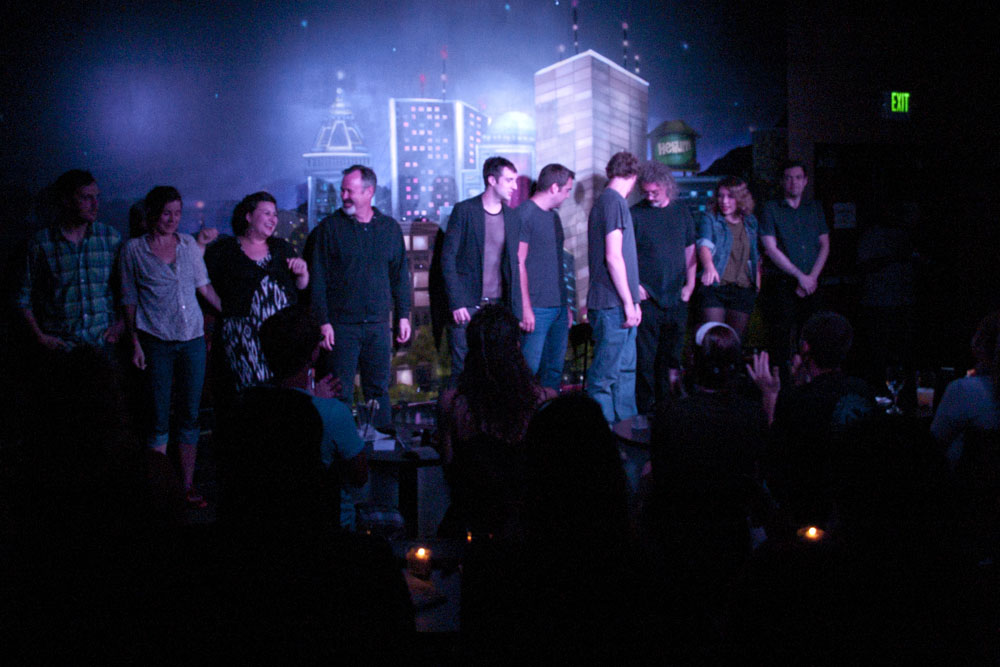All of the above? None of the above?
I recently read an online discussion about the move to have more gender-neutral bathrooms on campus, which anyone could use but would be particularly important for the growing number of transgendered students at PSU. The original post sparked a long chain of responses, many of which could be summarized as “Is this really an issue?” or “It’s not worth spending money on, for the small number of people who think they need it.”
As an individual whose biology and socialization both align with our society’s reigning conception of “male,” finding an appropriate public restroom hasn’t been a problem for me. But that doesn’t mean it isn’t a problem for others.
One critic of the idea had a point, in that such a project could have a cost disproportionate to the number of people it ostensibly serves. First, this is not entirely accurate, as these would be gender-neutral, not specifically transgendered restrooms, so anyone would be able to use the single-occupant facilities. This criticism, though, has implications that get at the very essence of the public university and, on a broader scale, liberal democracy. As much as we rightly value equality and fairness, “fair” is often at odds with quantitative notions of “equal.” Whether in the civil rights movement, the Americans with Disabilities Act, the educational system or many other aspects of the public sphere, providing fair circumstances and equal opportunities to everyone often requires unequal allocation of resources on a per-person basis.
The issue of facilities for the transgendered community has many implications, to which I could not hope to do justice here. For the moment, let’s consider some of the ways that such a project could bring together people from many different campus departments and communities.
This doesn’t have to be one more project (like, ahem, the new logo) where the administration chooses, without student input, to spend a lot of student money on a goal that could have been better achieved by just holding a contest among the art and design students on campus. We can make this into a learning and doing experience for anyone who wants to take part, and have it be something truly by and for the students.
First off, I think we could entirely defray the cost of the project by getting corporate sponsors. All over the campus and the city there are buildings and facilities bearing the names of the celebrated and/or wealthy. Set the schmoozers-in-training over at the business school to talk people with money into paying for facilities. While I shudder to think of the repercussions of a toilet named after Arlene Schnitzer, and I don’t know that a Failing restroom would inspire any more confidence than the Failing Pedestrian Bridge, I think that facilities named after local queer celebrities like Gus Van Sant, Thomas Lauderdale or, best of all in this instance, Darcelle. Certainly, some people in our community will object to further corporate inroads into higher education, and they are right to be skeptical. On the other hand, though, some campus units get far more financial assistance from the private sector than others – for example, sports and engineering. For those of us who don’t take part in either of those – and I suspect the transgendered community isn’t well-represented in sports or engineering – such efforts would allow a broader sampling of students to benefit from private largesse.
Next, we can put the chemical and materials engineering students to work coming up with graffiti-resistant surfaces. Considering the vandalism in traditionally gendered restrooms, it would be extremely na퀨͌�ve to think that facilities specially designed to bring comfort to those who don’t fit normal gender categories would remain entirely free from dubious messages. I have heard, however, that at schools with gender-neutral facilities, these restrooms have stayed remarkably unsullied.
Humanities departments such as communications, women’s studies, and sociology could work together on a capstone project documenting the history and benefits of single-sex restrooms – perhaps to be brought to print by the book-publishing program – so people at other colleges could read their work.
Hell, if I was trying to decide what college to go to, I’d be much more impressed by a school where administration, faculty and students worked together to ensure the safety of a growingly diverse student body than one that spent over $100,000 to come up with something that looks like a Girl Scout swastika.
In another of my online adventures, I found an unlikely (and probably unwilling) supporter for rethinking the current two-party system of restroom allotment. In an essay entitled “When a Woman Wears Pants,” (http://www.dividedbytruth.org/women_pants.htm) conservative Christian commentator Robert J. Stewart tells the story of a young child who saw two restroom doors, one with a figure in a dress and the other in a figure wearing pants, and wondered why so many women were choosing the door with the dress when they were clearly wearing pants. Stewart, using logic that leaves something to be desired, tries to argue that the moral course of action is to conform to the signs on public restroom doors. I take a different lesson from his anecdote. The way I see it, even a small child can be aware that the division of restrooms doesn’t adequately capture all the options open to people in an increasingly diverse society.
To learn more about the quest for gender-neutral restrooms, read “Peeing in Peace,” available for free download at http://www.transgenderlawcenter.org/



